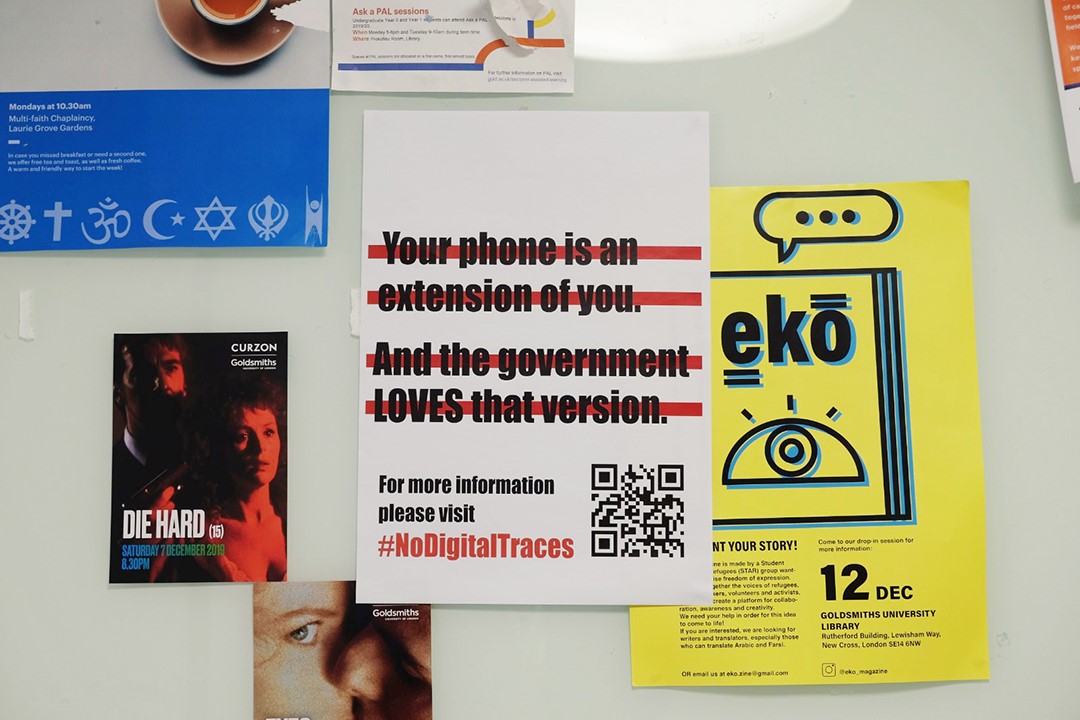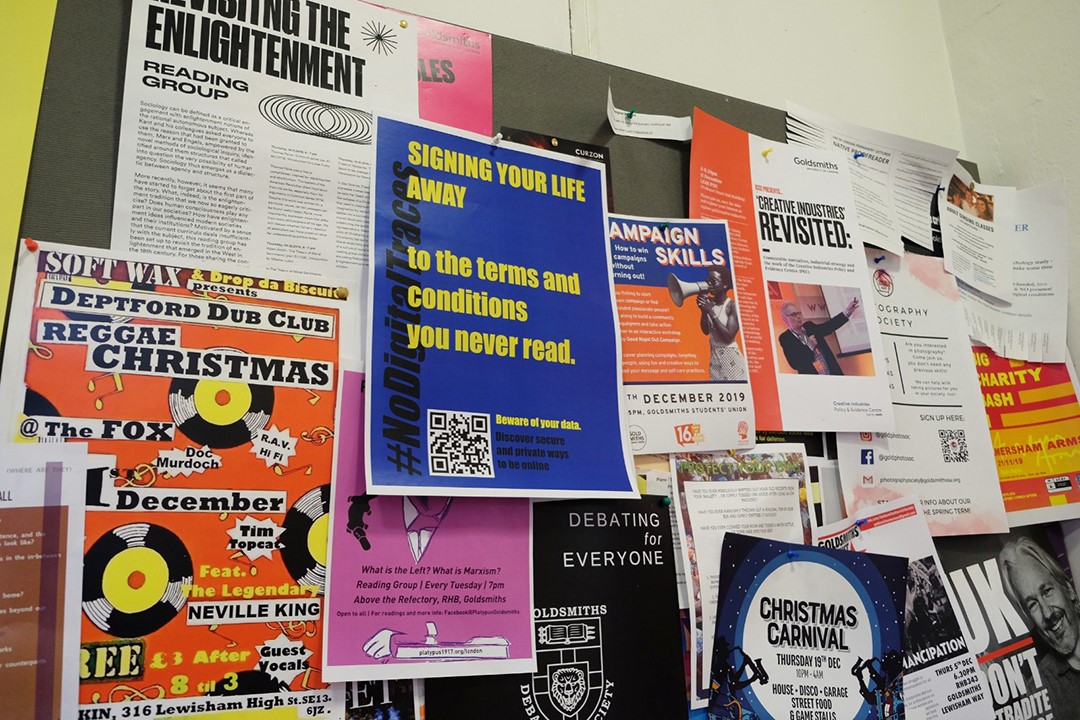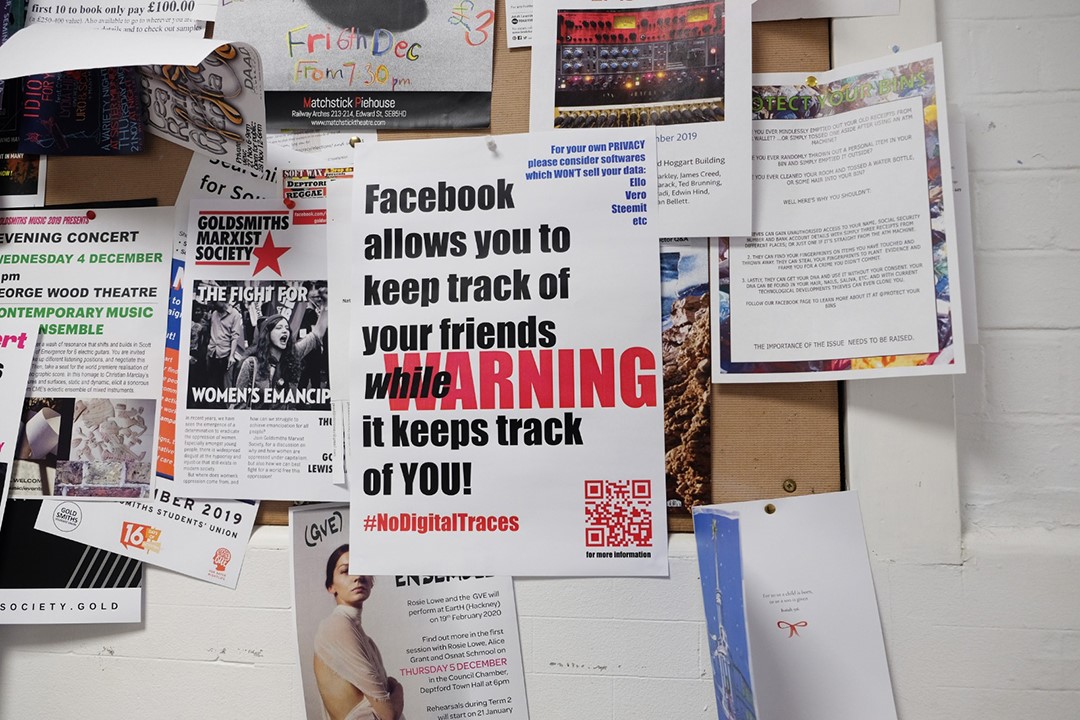#NoDigitalTraces
Socio-Political effects of Computation
Marina Cardoso, Meiying Gan, James Lawton, Giulia Monterrosa
Abstract
The public sphere is an area where people traditionally gather to discuss and solve problems related to their communities, but in most cases existing social powers attempt to exert control over that debate in order to influence the outcomes in their own favour. This is often done via surveillance and censorship, as well as with physical and psychological intimidation. These actions usually serve to either sway the public discourse in favour of the existing power, or else repress the actions of the participants to the point that their action can't threaten the existing power. When the participants of the public sphere discourse feel their abilities to freely discuss and independently solve the problems relevant to their community are curtailed enough, they will usually seek alternative venues for the public sphere debate.
New media is often viewed as a popular avenue for the vigorous exercise of free speech in the public sphere. This project seeks to emphasise the deliberate constraints utilised by existing social powers, particularly corporate and governmental powers, to curtail that debate in their own favour; as well as to highlight a few of the emerging methods used to invigorate new vibrant public spheres which are free of the limiting influence of the existing powers.
In our research we looked at the public sphere and its relation to technology and computational media. To do this we looked at the way technology, and computation in particular, are used to limit discourse, choice, and action. We envisioned this not as an attempt to find a solution to a particular problem with technology, like surveillance itself, but instead we looked at how technology limits the public sphere and then tried to subvert this by directly engaging the public about those limitations and their alternatives.
We produced a series of 12 posters and social media advertisements which inform about the limitations imposed by technologies as well as alternatives to those limitations. We also created a website for this project which was linked by QR codes on the posters. We then proceeded to try to run some social media messages about the limitations of social media discourse.
We received moderate responses, almost always in support. The attempt at advertising about social media on social media, while not technically censored, did encounter some interesting problems. We also learned a great deal about ourselves and others in terms of what software we use and why, including why many of the alternatives aren't in popular use. We discussed this casually in a short podcast as a reflection on the work we had done.
In conclusion, our artefact was a literal engagement in the public sphere by way of highlighting and discussing alternatives to many of the common restrictions of the public sphere. The result of this work and its feedback tells us that computation, algorithms, technology, and most importantly -- people, are able to both restrict the debate as well as set it free again. However this requires the action of concerned, active, and often knowledgeable individuals in order to successfully create alternatives that are widely used.
Website:
http://www.nodigitaltraces.com/
References
Agre, P. (1994) ‘Surveillance and capture: Two models of privacy’ The Information Society. 10, pp. 101-127.
Amoore, Louise. The Politics of Possibility: Risk and Security Beyond Probability. 2013. Print.
Andrejevic, M. (2013) Infoglut: How Too Much Information Is Changing the Way We Think and Know. New York, Routledge
Chayko, Mary (2017). Superconnected: the internet, digital media, and techno- social life. New York, NY: Sage Publications
Dandeker, C 1994. Surveillance, Power, and Modernity. Cambridge, UK: Polity Press.
Foucault, Sheridan, and Sheridan, Alan. Discipline and Punish: The Birth of the Prison. London: Penguin, 1991. Print.
Goode, L. Jürgen Habermas: Democracy and the Public Sphere. London; Ann Arbor, Miss.: Pluto, 2005. Print.
Joudeh, M. and Bevilacqua, J. (2017) 'Digital Fingerprints: The Data You Leave Behind' [Available at: https://www.forbes.com/sites/riskmap/2017/10/20/digital-fingerprints-the-data-you-leave-behind/#1e82d4957bce ]
Korosec , K. (2018) 'This Is the Personal Data that Facebook Collects—And Sometimes Sells'
Available at https://fortune.com/2018/03/21/facebook-personal-data-cambridge-analytica/
Lampson, Marc. (1999) Technology and privacy: The new landscape, edited by Philip E. Agre and Marc Rotenberg, Journal of the American Society for Information Science, Association for Information Science & Technology, vol. 50(7)
Rutherford, P. Endless Propaganda: The Advertising of Public Goods. Toronto: University of Toronto Press, 2000.
Skinner, B.F. (1938) The behavior of organisms: An experimental analysis. New York, NY: Appleton- Century.
Solove, Daniel J., 'I've Got Nothing to Hide' and Other Misunderstandings of Privacy. San Diego Law Review, Vol. 44, p. 745, 2007; GWU Law School Public Law Research Paper No. 289. [Available at SSRN: https://ssrn.com/abstract=998565]
.




















































































